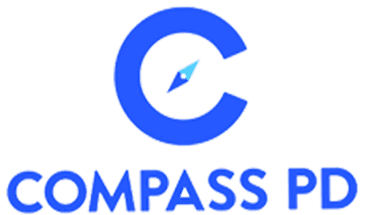Refocusing for Results: Simplifying Our Approach Transformed Student Learning
Dr. Carrie Hepburn
The Emotional Impact of State Test Scores
The release of state test scores brings about intense emotions, especially for those deeply invested in student learning and education. Despite our best efforts, we faced another year of disappointing test scores and the frustration of being labeled underperforming. This situation was particularly disheartening for the teachers and administrators who devoted themselves to improving student outcomes.
Despite making significant positive changes and providing ample resources, including additional interventionists, the test scores and the watch list designation did not reflect our efforts. Beginning-of-the-year screening data revealed that 50% of students in two buildings required intervention, increasing the overwhelming feeling of defeat. Despite our best attempts, the outcomes remained unchanged.
Overwhelmed by Good Intentions
As a district focused on improving literacy, the district office for English Language Arts recognized that the situation required a closer look. We held discussions with the building principals and curriculum team and realized that we had been implementing numerous strategies and interventions to improve outcomes. It became clear that the sheer volume of resources, programs, and efforts we had employed to effect change was staggering.
Reflecting on the tasks we needed to accomplish, we realized that teachers and students were burdened with too many responsibilities, hindering our primary goal of improving student learning. The 4 Disciplines of Execution by the Franklin Covey organization highlights the concept of Wildly Important Goals (WIGs) and the whirlwind. We acknowledged that the numerous expectations, resources, and pressure created a whirlwind with good intentions, but it ultimately hindered more than helped.
The Power of Focus: Choosing a Wildly Important Goal
To address this issue, we made a significant change. We decided to stop juggling multiple tasks and instead focus on one essential goal for the year. Concentrating on 2 to 3 goals in a year would allow us to achieve them excellently, considering other critical goals such as social-emotional learning and math. We knew that an organization with 4-10 goals might only reach 1-2 with excellence, while an organization with 11 or more goals achieves none. Therefore, we firmly resolved to define our primary goal, which aligns with Covey’s concept of a Wildly Important Goal (WIG).
Implementing a Simplified Approach
Our goal was to simplify and concentrate on the fundamental aspects of education. We focused on identifying what students should know, understand, and be able to do in reading. As part of our plan, I dedicated an entire day each month to working closely with each PLC (Professional Learning Community). During these day-long meetings, we reviewed the curriculum’s scope and sequence of standards, concentrating on the priority standard for that month. While other standards were still part of the curriculum, we aimed to emphasize the priority standard. We dedicated several hours to delving into the standard, defining key terms, and establishing a hierarchy of skills before planning the instructional approach to bring that standard to life in the classroom.
Overcoming Resistance and Building Confidence
Initially, this change was challenging, and some teachers were hesitant and even resistant to the new approach. However, as we continued the work and began translating each learning target into engaging instructional activities, the teachers’ energy and enthusiasm started to shift. By the end of the day, the PLCs had developed their reading lesson plans, identified formative assessments, and felt more prepared for responsive teaching.
As the school year progressed, we witnessed a positive impact on student learning and teacher confidence. More teachers began to embrace the process and emerged as leaders in their PLCs and buildings. Because of their deeper understanding of the standards and the transformative impact of this focused work, they became strong allies of the curriculum department and future curriculum writers.

Results and Long-Term Impact
By the end of the school year, I no longer needed to lead the planning meetings; the teachers had become confident and effective in leading the work. Our reading screening data significantly improved, with a 20% decrease in students needing reading interventions. Additionally, the end-of-year state scores revealed that the buildings were no longer on the watch list.
The momentum of change did not stop after one year; it continued, driven by the staff’s commitment and leadership. At Compass PD, our overarching goal is to build organizational capacity consistently. We firmly believe in the impact of enhancing collective teacher efficacy, which has a tremendous effect on student learning.
We have replicated this process in numerous organizations and achieved similar results. It has profoundly impacted student learning, teacher confidence, and state scores. If you have tried everything and still don’t see the desired results, consider simplifying and returning to the basics. While it may be challenging initially, the rewards will undoubtedly justify the effort.
Resources
Ainsworth, L. (2015). Powerful practices to improve teaching and learning. Retrieved from https://larryainsworth13.wordpress.com/
Culatta, R. (2015). Conditions of learning (Robert Gagne). Retrieved from http://www.instructionaldesign.org/theories/conditions-learning.html
Covey, S., Kosinski, L., & Thompson, M. (2021). The 4 disciplines for educators: achieving your wildly important goals. Franklin Covey Company
McTighe, J., & Wiggins, G. (2011). Understanding By Design Framework. Alexandria, VA: Association for Supervision and Curriculum Development.

